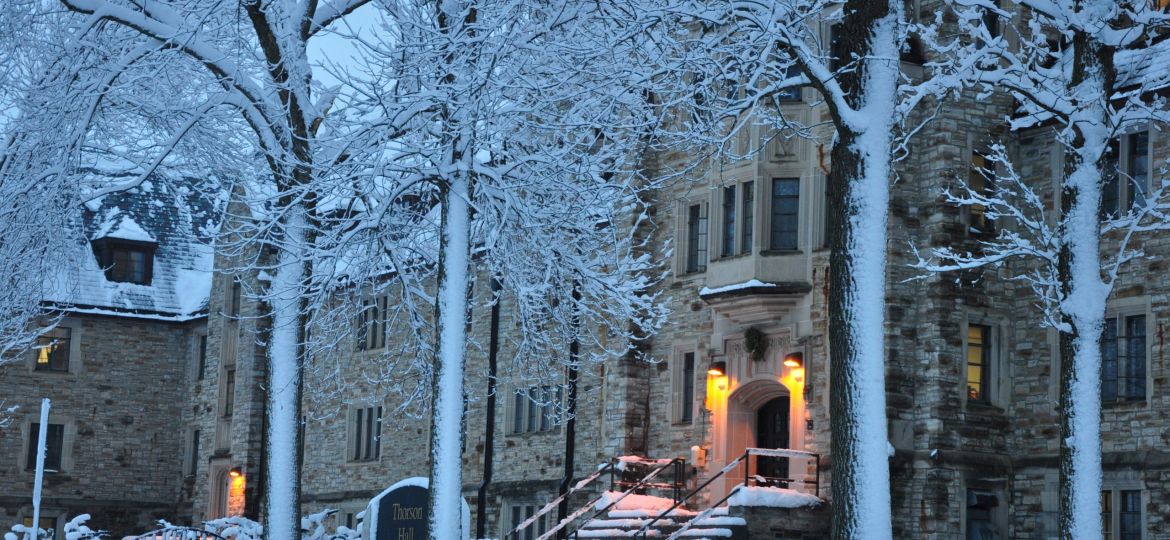
Although St. Olaf is a predominantly residential campus, many residence halls and other buildings remain inaccessible for students with disabilities or injuries.
Mellby, Thorson, Hoyme, Rand, Hilleboe and Kittlesby residence halls, as well as the Theater Building, lack elevators and other accommodations. Students who have suffered due to this issue are voicing their concerns, and the Student Government Association (SGA) and Residence Life staff, conscious of this pending problem, are looking to find a solution.
Navigating campus can be especially tricky for students who suffer injuries mid-way through the year since they have not arranged to live in an accessible dorm.
Mahmoud Aldirderi ’20 had reconstructive ACL and meniscus surgery in late August 2019. He lives at the bottom floor of a Rand stairwell, which forces him to traverse two flights of stairs every time he needs to go anywhere.
“I could not put any weight on my foot in my case, whereas if only my ACL was torn I could use my foot,” Aldirderi. “So, initially I stayed off campus at some very good friends of mine. They took care of me after the surgery, they had cars and I didn’t have to bother with the inaccessibility – no stairs.”
Two weeks into the semester, Aldirderi’s physical therapist gave him the green light for putting more pressure on his injured leg. He then moved back into Rand. However, the dorm’s inaccessibility persisted as a problem. Usually, students in a similar situation are able to move to a more accessible dorm. Aldirderi received this offer but needed his roommates for psychological support and, due to the severity of his surgery, to assist him with standing up, showering, changing ice packs and other things.
Even with his friends’ support, the stairs were a huge obstacle for him.
“It was isolating,” Aldirderi said. “The stairs were horrible. I would rather just stay in my room all day and end up not doing anything.”
Recent graduate Kayla Carlson ’19, who has a physical disability, experienced the lack of accessibility on campus every day for four years. Not only was Carlson incapable of accessing most dorms due to their lack of elevators, but she found that the supposedly accommodating residence halls also lacked proper infrastructure.
“The solution has been to just put people in accessible dorms but even though Larson has an elevator, it doesn’t have an accessible bathroom,” Carlson said. “Same with Mohn. As far as I know, Ytterboe doesn’t have a shower with a bench.”
While academic buildings on campus are generally more accommodating for people with disabilities, the Theater Building remains inaccessible. Though the building has an elevator in the back that accesses the green rooms, it requires two flights of stairs to reach classrooms on the upper floors.
“It’s simply that the school should take into account students with disabilities regarding their architecture. Period,” Aldirderi said.
This is not an issue that has gone unnoticed. Student Government Association (SGA) President Devon Nielsen ’20 and Vice President Ariel Mota Alves ’20 are aware of the lack of accessibility at the College and intend to address this issue in spring 2020.
The two executives are both board members of the Minnesota Association of Private College Students (MAPCS), an organization comprised of Minnesotan college student government representatives. MAPCS seeks to find innovative solutions to the common struggles of private colleges by means of a collective effort.
“This coming spring [MAPCS] are going to discuss accessibility. This will be an ongoing conversation,” Mota Alves said.
This particular issue is not unique to St. Olaf alone, but extends to most private colleges in Minnesota. With many dorms without elevators, oddly shaped terrain and seasons that alter landscapes with time, maintaining accessibility throughout campus is a challenge.
From a legal standpoint, it is permissible that not all campus dorms and buildings are created equally.
“[An] example could be a student who needs to be able to be in a wheelchair while showering,” said Associate Dean of Students for Residence Life Pamela McDowell. “Not all halls have showers you may roll into – but as long as some halls do we meet the requirements. As we renovate we do try to address more of these accessibility concerns.”
Both staff and student authorities are cognizant of this pending issue. Feasible solutions, however, are highly complex, requiring architectural ingenuity that limits quick change.
“I applaud St. Olaf for their work,” Nielsen said. “But my ultimate dream would be that St. Olaf continues that drive to become more accessible throughout campus.”

